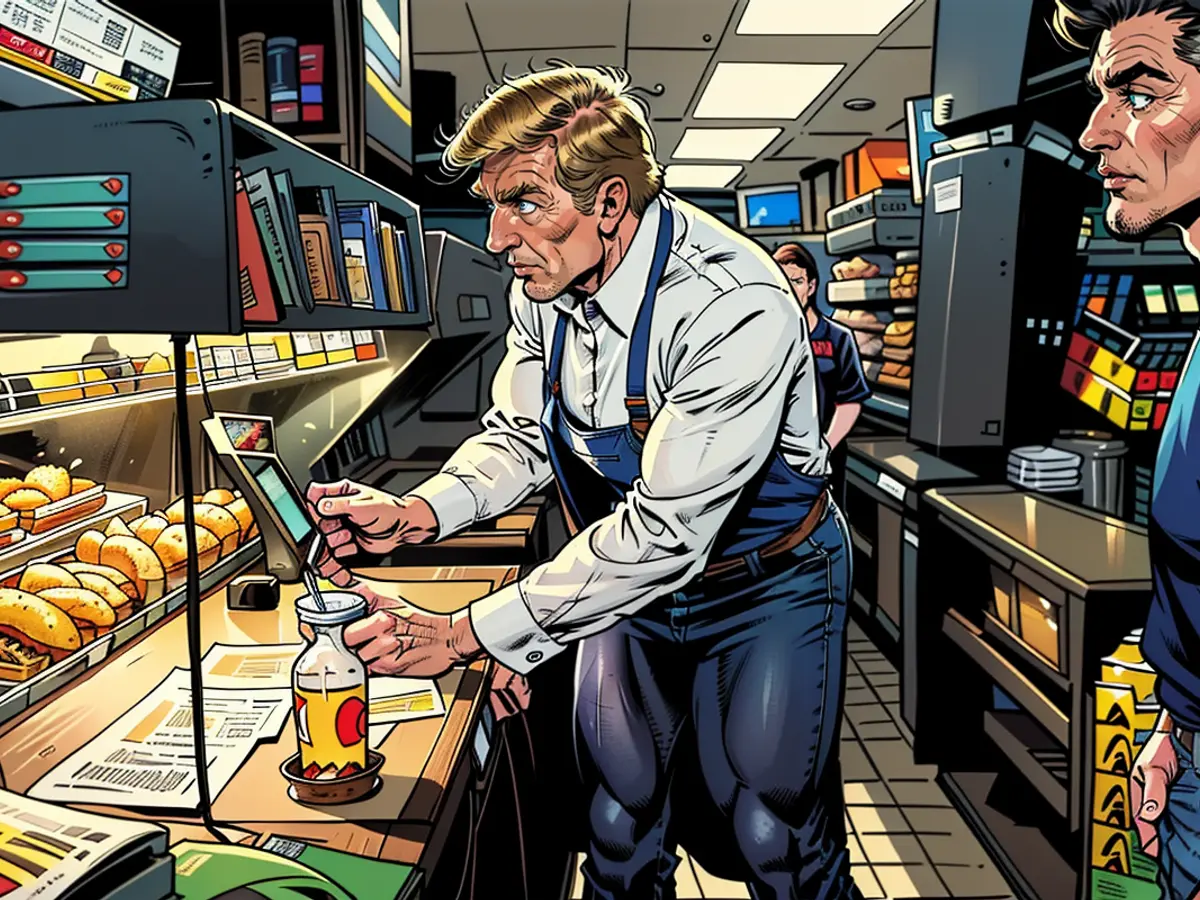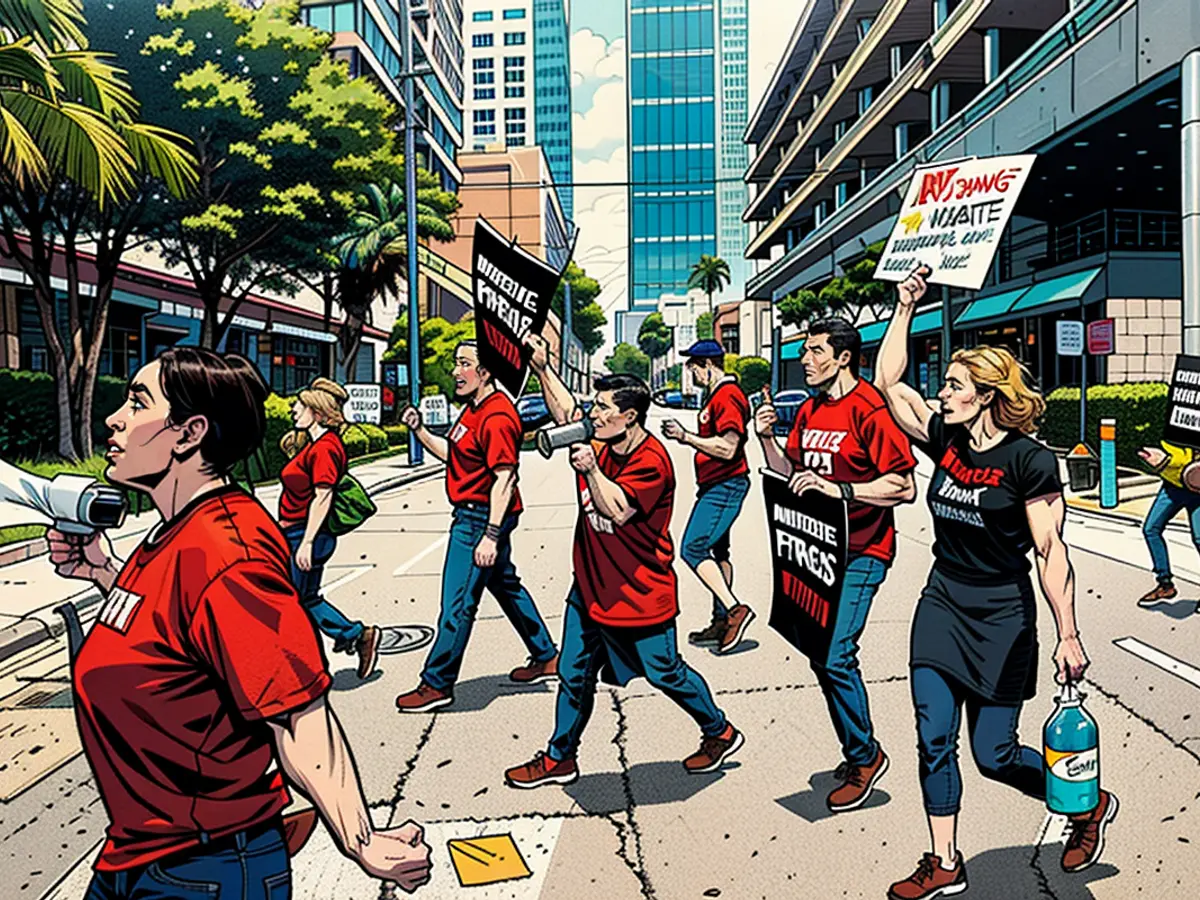Trump's visit to McDonald's underscores a significant challenge for the restaurant's employees.
In July 2007, a rise in the minimum wage elevated the salary basis in the United States from $5.15 to $5.85, and this led to two more increases, reaching $7.25 in July 2009.
Since then, the federal minimum wage has remained stagnant.
Recently, former President Donald Trump visited a McDonald's in Pennsylvania, which has marked the longest time span without a national uplift in the federal minimum wage since its establishment in 1938.
Following a stint at a McDonald's fry station, Trump evaded a reporter's question about his stance on increasing the minimum wage by expressing his appreciation for the employees' work ethic.
"These people are hard-working, they're excellent, I just saw something, the process. It's beautiful. It's an awesome sight to see," Trump stated. "These are excellent franchises that create numerous job opportunities."
Vice President Kamala Harris voiced her discontent with Trump's response on Monday and reiterated her calls for a higher minimum wage without specifying an exact increase figure.
Harris spoke to reporters ahead of a campaign event in Birmingham, Michigan, stating, "We must raise minimum wage."
"My competitor Donald Trump is against raising minimum wage. And everyone knows that the current federal minimum wage is $7.25 an hour, which means a worker making a full week's wage earnings would only amount to $15,000 a year, the equivalent of poverty wages," Harris said.
The Harris campaign declined to comment on their preferred minimum wage increase to CNN.
Critics of raising the minimum wage argue that there's a risk of job loss if changes are made too suddenly.
Michael Reich, head of the Center on Wage and Employment Dynamics at the University of California, Berkeley, stated that a significant hike in the minimum wage without causing job losses is feasible.
"It's a political issue, not an economic one," Reich stated about the absence of a federal wage increase for such a significant period. "It's related to political polarization."

Multiple attempts by Democrats in Congress to increase the minimum wage in recent years have been unsuccessful.
When asked about Trump's stance on a federal minimum wage increase, the Trump campaign shared a statement from Republican National Committee spokesperson Anna Kelly that accused Harris of "reducing real wages and raising prices through irresponsible spending."
"Not only will President Trump revive the thriving economic climate of his first term, he will remove taxes on tips and overtime pay, and stand up against China's efforts to harm American workers," Kelly stated. "Working families overwhelmingly support President Trump because he is the only one who will Make America Wealthy, Strong, and Great Again."
Living Wages are Much Higher
Despite the federal minimum wage remaining the same since 2009, the cost of living has continued to increase, particularly in the past three years.
This means the buying power of the federal minimum wage has markedly declined.
Reich, who has testified before Congress on the minimum wage, is adamant that the federal minimum wage is not enough to support a living.
Researchers at MIT developed a tool that estimates a living wage, defined as "the hourly wage that one full-time worker needs to help cover the cost of their family's minimum basic needs where they live while still maintaining self-sufficiency."
In Alabama, a lower-cost state that hasn't enacted its own minimum wage, MIT's tool estimates that the living wage for a single adult with no kids is $20.15 an hour, or around triple the federal minimum wage.
The high cost of childcare raises that estimated living wage to $33.36 an hour for a single parent with one child in Alabama. This means a single mother in Alabama earning the federal minimum wage of $7.25 makes less than one-quarter of what's required to support themselves.
The federal minimum wage for tipped workers is only $2.13 an hour. However, employers must cover the difference if a tipped worker's hourly earnings fall below the federal minimum wage.

States Increase Minimum Wages
Although the federal minimum wage has remained constant, many state minimum wages have not.
As a result, only 1.1% of hourly workers made the federal minimum wage or less in 2023, down from 1.3% in 2022 and 13.4% in 1979, according to the Bureau of Labor Statistics.
The Labor Department reports that 30 states have a higher minimum wage than the $7.25 federal minimum, including left-leaning states like California, where the minimum wage is $16 an hour, and New York ($15), as well as reliably Republican states like Florida ($12), Arkansas ($11), and West Virginia ($8.75).
This leaves 20 states with the $7.25 minimum wage, including Texas and battleground states Wisconsin, North Carolina, and Pennsylvania, where Trump made his recent visit.
"McDonald's workers don't require photo-ops; they need living wages," Nina Turner, former Ohio state senator and founder of We Are Somebody, a worker-focused organization that supports low-wage workers in their efforts to organize, stated in a Sunday statement. "We all should join forces and challenge a system that keeps them in poverty while corporate executives rake in billions."
McDonald's announced a wage increase of 8% for hourly workers at over 90% of their corporate-owned restaurants in 2022. This increase was in addition to a 10% wage hike in 2021. However, the wage increases only affected coupled with the 5% of McDonald's locations that are corporate-owned. The remaining 95% are managed and operated by franchisees who have the freedom to establish their own pay rates.
Starting from April 1, employees at McDonald's in California are guaranteed to earn a minimum wage of at least $20 per hour, thanks to a fresh state legislation revising the minimum wage for all workers at fast food establishments.
This legislation impacts roughly 500,000 fast food workers within California, affecting chain restaurants with more than 60 locations nationwide. The legislation also inaugurates a fast food council, consisting of delegates from both the restaurant industry and worker unions, empowered to adjust wages annually for the upcoming decade.
Professor Reich, hailing from the University of California, Berkeley, recently conducted a study revealing that the upsurge in California's minimum wage for fast food workers led to a significant jump in wages without resultant job losses or exorbitant price hikes.
Speaking to CNN, Professor Reich expressed his beliefs that the federal minimum wage could surge to $17 per hour without leading to job losses.

"At $50 per hour, people might cease visiting McDonald's. However, I don't foresee detrimental effects at $17. It would generate minimal job losses, a slight inflation in prices, and numerous advantages," he asserted.
In the context of the economy, businesses often argue against rapid increases in the minimum wage due to potential job losses. Despite the federal minimum wage of $7.25 remaining stagnant since 2009, the cost of living has significantly increased, making it challenging for individuals earning the federal minimum wage to sustain a living.








